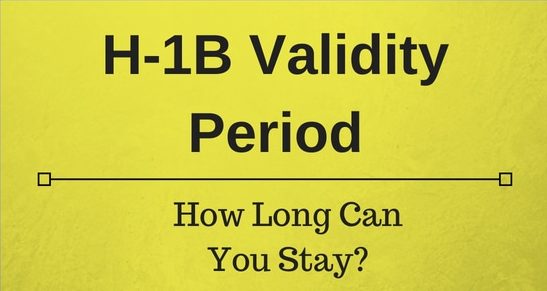The H-1B visa is one of the most popular nonimmigrant visas available. From its relatively low requirement standards to its versatility, it’s no wonder why tens of thousands of petitions flood the USCIS service centers every year. However, if the H-1B is the route you are planning on taking to work in the U.S., there are some important aspects of the visa to take into account. One of those aspects is the H-1B validity period.
H-1B Visa Overview
Here is a quick rundown of how the H-1B visa works leading up to the validity period, which we’ll discuss below. The H-1B is a nonimmigrant (temporary) visa designed for foreign workers in specialty positions. The qualifications are relatively simple, though not necessarily straightforward:
- You must have a job offer from a sponsoring U.S. employer for a specialty job that requires a bachelor’s degree.
- You must have a bachelor’s degree that is related to your position.
If you meet these criteria, then your sponsoring employer will need to obtain a Labor Condition Application for you before filing an I-129 petition and appropriate H-1B fees with the USCIS under two conditions:
- Cap-subject – your employer is subject to the annual H-1B lottery and can only file your petition on the first business day in April. If your petition is randomly selected in the lottery and subsequently approved, you will be able to start working on October 1st of that same year.
- Cap-exempt – your employer is not subject to the cap and is able to file your petition at any time without having to submit to the odds of the lottery. If your petition is approved, then you can start work immediately.
In either case, the outcome is the same. You will have an H-1B visa and will be able to work in the U.S. for a very specific amount of time, which we will detail below.
H-1B Validity Period
The initial H-1B validity period is three years from your employment start date. So far, the H-1B is on par with some of the other common nonimmigrant visas such as the L-1A and L-1B. In fact, other, more exclusive visas such as the O-1 and E-2 only boast an initial period of two years.
However, the differences begin to manifest when you consider the extensions. The L-1A allows you to extend your validity period to seven years. Even better are the O-1 and E-2 visas, which permit the holder to extend their validity period in an indefinite number of increments. As long as they maintain their status, they can remain in the U.S. The H-1B, on the other hand, only permits you to extend your visa another three years, giving you a grand total of six years to work in the U.S.
While this may be better than the five-year maximum granted to the L-1B visa, it still may not be enough for you. However, unlike the L visas, there is a little bit of flexibility when it comes to extensions.
H-1B to Green Card: Extending Beyond Six Years
In certain situations, the USCIS may allow you to extend your H-1B duration of stay beyond the typical six-year maximum. While the USCIS can reject or approve any petition to extend as they see fit, if you meet one of the following two general criteria, you may qualify:
- A PERM Labor Certification has been filed with you as the beneficiary within the last 365 days. In cases where a PERM is not needed, then the criterion is that an I-140 must have been filed within the last 365 days.
- Your PERM and I-140 petition have been approved and you are only waiting for your priority date to become current so that a visa number will be available.
This last criterion is especially helpful due to the fact that it can sometimes take years of waiting before your priority date becomes current. Rather than be forced to leave the country while you wait, this extension beyond six years allows you to continue working as an H-1B employee until your green card is in your hands or something happens to cause your I-140 or PERM to be withdrawn or revoked. These extensions will take place in one-year increments.
H-1B Grace Period
Fortunately, if your H-1B validity period ends or you suddenly find yourself without a sponsoring employer, the USCIS has recently made special provisions in the form of grace periods.
At the beginning and again at the end of your H-1B validity period, you will have a ten-day grace period to get situated and/or settle your affairs before beginning work or leaving the country (though the 2017 Final Rule clarified that you are permitted to use this time as you see fit). So a total of twenty days is added onto your validity period.
Additionally, if your employment is terminated before the official H-1B duration of stay has ended, you will be granted a grace period. In the past, those that found themselves in this predicament would have to leave the country immediately. However, since the 2017 rule, a 60-day grace period has been extended beginning the day that you no longer have a sponsoring employer.
How VisaNation Law Group Immigration Attorneys Can Help
No matter how much you think you can tackle the minutiae of obtaining and extending your H-1B visa, at the end of the day, you are still limited by your knowledge. By hiring an immigration attorney for your case, you can lean on both extensive knowledge as well as years of experience to help protect the investment that your visa represents.
VisaNation Law Group has a dedicated team of experienced H-1B attorneys that are at your disposal for whatever your case may require. From obtaining the visa in the first place to securing an extension based on your green card, we’ll work with your case just as we’ve worked with countless others in the past.
To get in touch with a VisaNation Law Group immigration lawyer, you can fill out this contact form to schedule your consultation today.
 Shilpa Malik
Shilpa Malik  Boris Ignachkov
Boris Ignachkov 